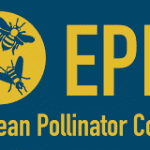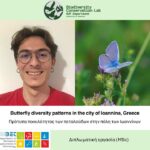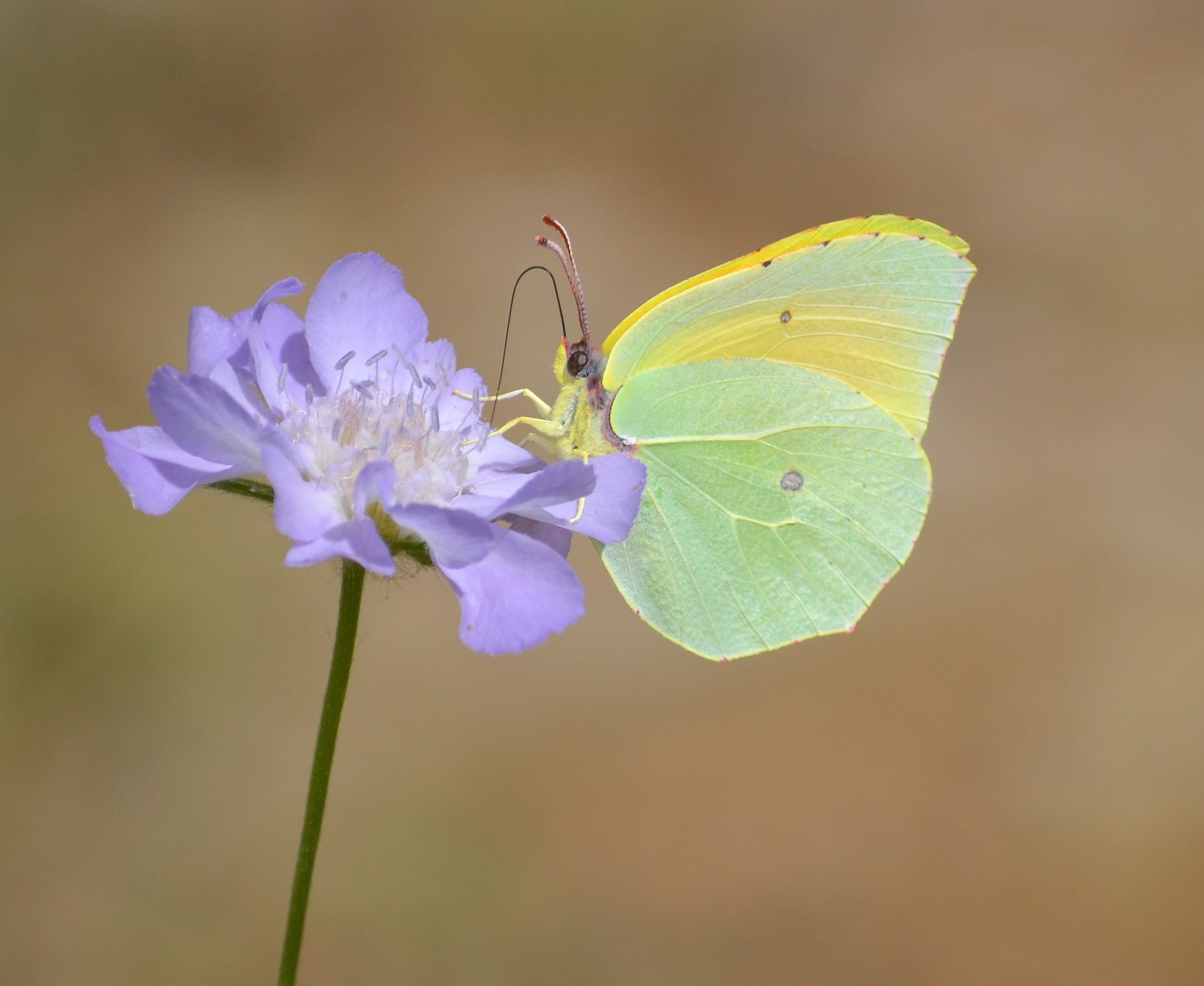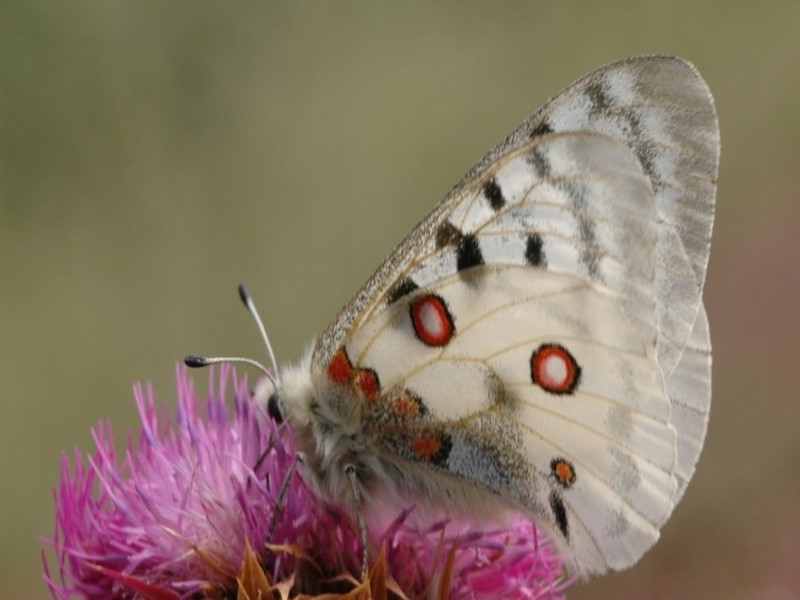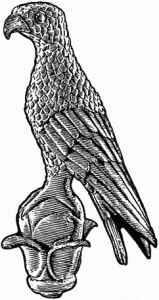APOLLO
Citizen science
Prof. Vassiliki Kati. Coordinator
Dr. Konstantina Zografou
Dr. Olga Tzortzakaki
Konstantina Nasiou (PhD candidate)
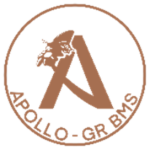
Goal
Parnassius apollo (@A.Aga)
Objectives
- Conserving butterflies and their habitats.
- Supporting the European Butterfly Monitoring Scheme eBMS.
- Promotion of the implementation of the Nature Restoration Law and other butterfly-focused policies
- Increasing awareness of butterflies and their role in the functioning of nature.
- Developing citizens' skills in butterfly identification.
- Increasing collective knowledge on butterflies and their habitats in Greece.
- Promoting research on butterflies.
- Promoting environmental education about butterflies.
Apollo in a nutshell
If you love nature, admire the “flying flowers” and care about their conservation, then… you are a candidate volunteer of apollo.
Why apollo?
We named it “apollo”, after the butterfly Parnassius apollo, a symbol of the beauty of our wild mountains. It also refers to God Apollo, eternal teenager, God of light and protector of the fine arts, since butterflies have an ephemeral life, love light, and are themselves an art form….
Who coordinates apollo?
When did it start?
In 2021 and continues to grow dynamically.
I know nothing about butterflies. Can I participate?
Yes! We can all be part of the program—children and adults alike. The three corresponding methods of recording butterflies have three difficulty levels. Take your phone and your camera, and on sunny days, go out in nature to record butterflies!
Which method to choose?
The first level: start with simple random recordings anywhere (R-random), by taking a picture of a butterfly and using the platform of iNaturalist to upload your photo in the apollo project. You’ll start to learn the species….
Then move to the second level: try to make a fifteen-minute point, recording all the butterflies in an area by using the mobile application ButterflyCount (Greek manual provided).
Finally, proceed to the third and most important level: conduct a 300 m transect (T-transect) by recording all butterflies in a 5-meter zone as you walk, doing several repetitions each year.
Why are transects important ?
Transects are the backbone of apollo project. Did you know that 10.000 European citizens participate by conducting over 13.000 transects annually? Join this pan-European effort!
From our transects, the Grassland Butterfly Indicator is calculated. You are helping to implement the Nature Restoration Law, voted in 2024. It includes the goals for increasing butterfly populations in agricultural ecosystems and pollinator populations!
How does apollo support me?
To each of the registered active volunteers, we offer:
- official research permission for sampling in nature from the Ministry
- guidelines for the recording and identification of butterflies
- electronic book – photographic guide to butterfly identification “Lafranchis T. 2004. Butterflies of Europe: Identifying Butterflies is Easy – New Field Guide & Key“. Diatheo
- Butterfly nets, in a limited number for volunteers conducting transects
- App translated in Greek (ButterflyCount App) and instructions for its use
- Interactive Greek platform (eBMS) and instructions for its use
- support in the identification of species
- apollo-project into iNaturalist for the organized entry of observations
- networking and communication group on facebook
A first core of apollo volunteers has already been created, and we hope to have the pleasure of seeing our team grow every year. We are all on this journey together. The BCL may have launched the initiative, but its success depends on your active participation. JOIN US!
The apollo files
You are not alone! We offer help and guidance. All the files and instructions you will need are in the central apollo file repository – apollo_drive – and are presented below. We suggest you read in the order shown in the table:
File name | Content |
| Apollo_register.pdf | Instructions for registration and navigation inside the apollo drive. |
| Apollo_intro.pdf | Get to know apollo in 15 questions. |
| Apollo_sampling.pdf | The main file of apollo project, containing detailed instructions on the methods, the recording of butterflies in nature, species identification, the operation of apollo and useful links. Your main guide. |
| Apollo_terms.pdf | Terms and conditions of participation in the apollo project, terms and conditions of use and data sharing, list of sensitive species. |
| Apollo_butterlfy_list.xls | List of the butterflies of Greece, their conservation status and the sensitive species. |
| Apollo_platform.pdf | Instructions for using the eBMS web platform. |
| Apollo_app.pdf | Instructions for using the ButterflyCount application |
| Apollo_database (folder) | Apollo_database. xlsxTemplate of excel database for entering butterfly records. Only for those who do not want to use the online eBMS tools. The “traditional” approach. Apollo_database_help.pdfInstructions for completing and sending the excel database. |
| Apollo_files_EN | The apollo files in English. |
How do I identify butterfly species?
Five steps
Less experienced volunteers should rely mainly on photographing butterflies on the spot and work more at home. Apps and automatic identifications help during your first steps. Knowledge comes with time, using field guides. Detailed instructions in Butterfly_sampling.pdf. In a nutshell:
- Go to the list of species of Greece in Apollo_butterfly_list.xlsx (apollo_drive). Consult it for the species names to use.
- Upload your photo online here (automatic species recognition @L. Pamperis) or on iNaturalist. You have a first indication of the butterfly you made a photo of.
- Please work with the species identification key you received from us (Lafranchis T. 2004) and try to identify your species by learning the characteristics that differentiate it from others. In addition, check the species characteristics and wings’ details.
- Buy a butterfly guidebook, such as the popular Collins English Guide, and underline all the Greek species. Make notes on your book, putting arrows pointing at the species characteristics important for its identification based on the Lafranchis guide and the wing details on L. Pamperis’ website.
- For the difficult ones, ask for identification help on Facebook, in the open, populous and popular group Butterflies & Moths of Greece & Cyprus.
I want to become a member. What do I do?
Let’s now go through the five steps to join the program and start the beautiful journey to the butterfly world… The steps are here, and detailed instructions are in Apollo_register.pdf.
1. Get informed
Download the files from apollo_drive on your computer.
Read first the two following files (time needed 1.-1.5 h). Apollo_info.pdf and Αpollo_sampling.pdf. Now you have a complete picture of the program and how it works.
2. Accept the terms of participation
Read the terms of participation in Apollo_terms.pdf (time 15-20′).
3. Choose your method(s) for butterfly recordings
Based on your level of knowledge about butterflies and the time you can spare, you can choose one or more sampling methods you want to apply and then declare them on the entry form. The methods are presented in the file you have already read – Apollo_sampling.pdf.
- R-random: simple recording by uploading a photo to iNaturalist.
- P-point: recording all species at one point for 15 minutes using the ButterflyCount app.
- T-transect: systematic repeated recording of all butterflies along a 300 x 5 m transect, using the eBMS platform and optionally using the ButterflyCount app.
4. Apply for membership
Fill in your details in the registration form of the University of Ioannina BCL_apollo_register.
5. Register on platforms and install mobile apps
- Register to iNaturalist (username and password) and install the application iNaturalist app to upload photos of butterfly species (R-random). Instructions in Apollo_sampling.pdf.
- Register on the eBMS platform (username and password). It is required for mapping transects (T). It is also used for points (P). Instructions eBMS Transect input system Guide. pdf (download the pdf from the apollo drive or the eBMS website)
- Download and install the app ButterflyCount. It is required for conducting points (P). It is also used for transects (T). Instructions in eBMS site https://butterfly-monitoring.net/ebms-app
Regional schemes
We actively encourage local initiatives to establish regional butterfly monitoring programs, as part of the national apollo/GR-BMS scheme. These regional schemes operate under the apollo umbrella but are independent schemes led by dedicated regional coordinators who bring their own unique energy and creativity. Together, we help foster knowledge, passion, and enthusiasm for butterflies across every corner of Greece.
In 2025, we’re delighted to welcome the wonderful Corfu scheme, led by Corfu Butterfly Conservation. Their passion and commitment bring valuable energy to the national effort, and we’re excited to see their contributions take flight. Stay tuned and visit the CBC website.
Useful links
- https://www.vlinderstichting.nl/butterfly-conservation-europe/ Butterfly Conservation Europe
- apollo_drive Central apollo file repository
- https://bc.lab.uoi.gr/en/research/projects/apollo/ Apollo website
- https://www.facebook.com/BCL.Ioannina Facebook page of BC lab
- https://butterfly-monitoring.net/en Web platform of apollo in the eBMS
- ButterflyCount eBMS mobile app
- https://www.inaturalist.org/projects/apollo Web platform of apollo in iNaturalist
- iNaturalist.app iNaturalist mobile app
- locusmap Free mobile mapping app
- http://www.pamperis.gr/recognition/index.html Automatic online butterfly identification
- https://pamperis.gr/en/ Distribution maps, species identification instructions
- Butterflies of Greece app Pamperis L. 2016. Free app with butterfly photos
- https://www.facebook.com/groups/greekbutterflies Facebook group for butterflies
- https://butterfliesofcrete.com/ Crete butterflies
- https://www.corfubutterflyconservation.org/?lang=en Corfu butterflies
- Butterflies of Kefalonia-Ithaca Geopark
Acknowledgements
Funding: We would like to thank the following sponsors who believed in our effort and supported us financially: National Center for the Environment & Sustainable Development – ECPAA (now NECCA), Biodiversity Conservation Lab (BCL), Butterfly Conservation Europe (BCE), LandArt productions EE. The financial management is carried out by the ISO certified administrative structure of the Research Committee of the University of Ioannina.
Acknowledgements: To Nikos Filippidis, apollo volunteer who designed the logo, to sayWow company for supporting the apollo website, to the BCL members who contribute to the operation of apollo, and to all our Apollonian volunteers who give their time and love and encourage us to continue.
News
News of apollo and events
